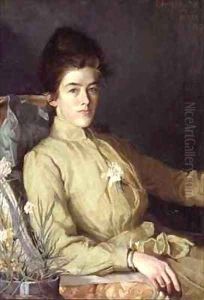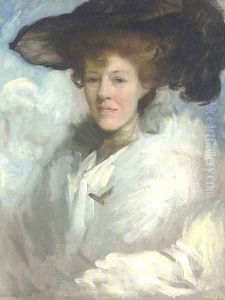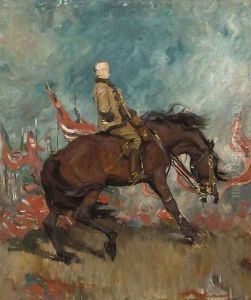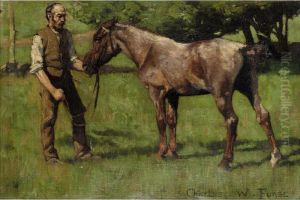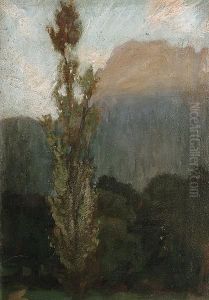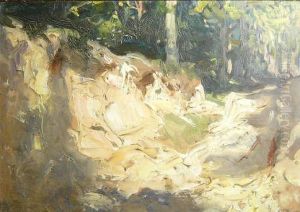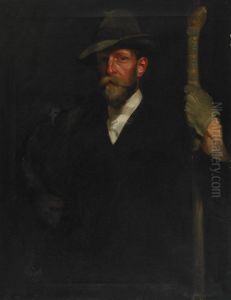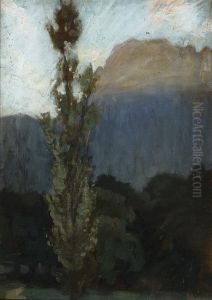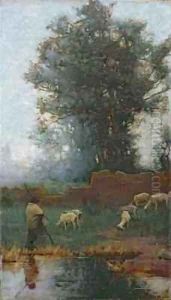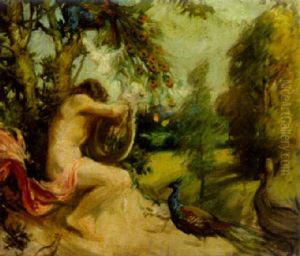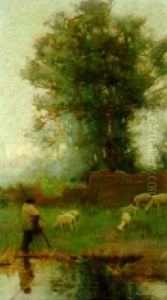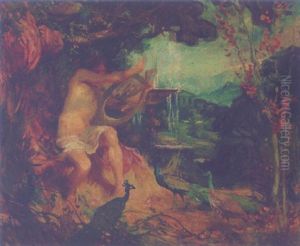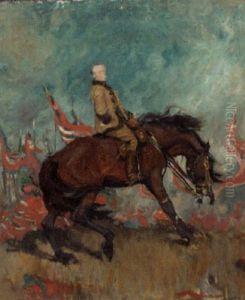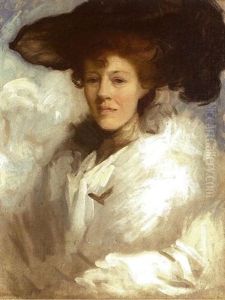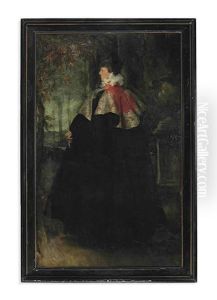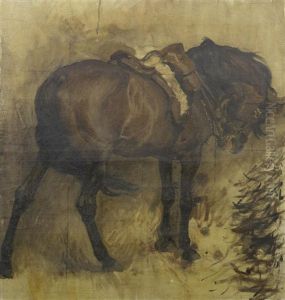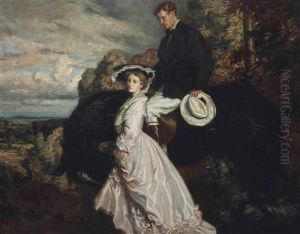Charles Wellington Furse Paintings
Charles Wellington Furse was an English painter who belonged to the late Victorian period. Born on January 13, 1868, in Staines, Middlesex, England, Furse was known for his striking portraits and genre scenes that captured the essence of British aristocracy and the vibrancy of the Newlyn School, with which he was associated.
Furse came from an artistic background. His father, the Rev. Charles Wellington Furse, was a cleric, but his mother, Augusta Foster, was related to the landscape painter John Constable. This connection to the arts profoundly influenced Furse's career. He received his education at Marlborough College before moving on to study at the Slade School of Fine Art in London under the tutelage of Alphonse Legros and Sir Edward Poynter.
Furse's artistic career rapidly gained momentum after his studies. His work was exhibited at the Royal Academy from 1890. He developed a reputation for his dynamic and sophisticated portraits, which were often noted for their bravura handling of paint and insightful characterization. One of his most famous works is the portrait of 'Diana of the Uplands' (1903-04), a large canvas showing his wife, Katharine, in a dynamic outdoor setting, which is now held in the Tate collection.
Unfortunately, Furse's life and career were cut short by illness. He suffered from tuberculosis, which in those days was incurable and often fatal. Despite his health challenges, Furse continued to work and produce art. His last years showed a shift towards a more Impressionistic style, which can be seen in his sweeping landscapes and informal portraits.
Furse's untimely death at the age of 36, on October 16, 1904, in Barton-on-Sea, Hampshire, was a significant loss to the British art world. Furse's legacy endures, however, in the small but influential body of work he left behind. His portraits remain a vibrant record of Edwardian society and its leading figures, and his style continues to be celebrated for its energy and modernity.
